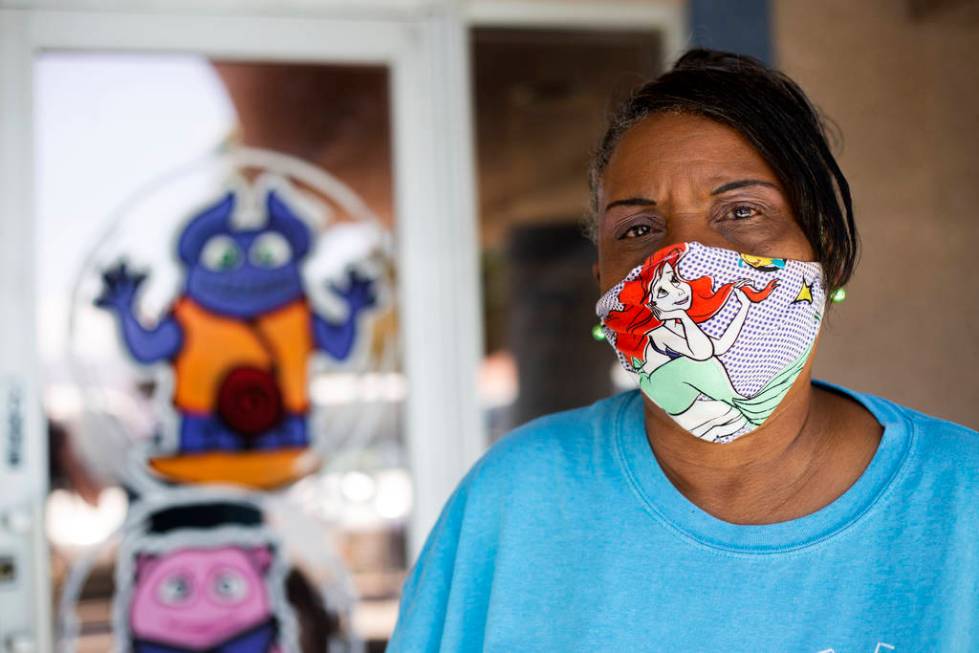Making more on unemployment benefits than your old job? You’re not alone.

Joseph Mickus never expected to have extra cash in his pocket while out of a job.
The Henderson resident said he is making about $200 more per week with state unemployment benefits than when he was working as an emissions inspector at a smog center in Las Vegas. He was laid off in March as the state’s economy shut down almost overnight to help curb the spread of the novel coronavirus.
“Oh, it’s still very much paycheck to paycheck … but the additional money does help,” Mickus said.
President Donald Trump signed the Coronavirus Aid, Relief, and Economic Security Act in March, which added $600 to a filer’s traditional weekly unemployment benefits. With Nevada hitting the country’s highest unemployment rate — 28.2 percent — in April, a number of Nevadans like Mickus are finding themselves receiving more on unemployment than when they were working.
Mickus said he’s even been able to rebuild his savings account.
“A few years ago, we lost our cushion, so any kind of emergency could really turn around and be devastating, so this (extra money) helps put that little bit of cushion back,” he said.
Reaching average
The coronavirus pandemic brought the the U.S. economy to a sudden halt as millions of Americans were left jobless by the end of March. Nearly 3.3 million people filed for unemployment benefits that month — almost five times the record set in 1982, according to the U.S. Department of Labor.
State unemployment benefits are designed to push filers to return to work by not replacing a person’s full wage, but with no work available, Congress tacked on the additional $600 payment program in the CARES Act, set to end July 31.
“It’s designed to give the average worker a full wage replacement, but Congress picked a dollar amount rather than mandating each worker got to 100 percent,” said Alix Gould-Werth, director of family economic security policy at Washington Center for Equitable Growth.
Nationally, the $600 weekly boost means the average person receiving unemployment benefits is bringing in $962.94 per week, a penny more than the average private sector worker brings in per week, based on 2019 data from the U.S. Department of Labor.
In Nevada, state data show the boost comes out to $964.20 per week, $117.67 more than the average weekly wage a private sector employee earned in 2019.
Policy makers are debating whether people receiving more money from jobless benefits than they earned at their old jobs will be resistant or hesitant to return to work.
“Simply put, people aren’t going to want to take a pay cut to go back to work — and who could blame them?” said Michael Schaus, spokesman for the Nevada Policy Research Institute and executive director of National Employee Freedom.
John Restrepo, founder of RCG Economics and a Las Vegas consultant, said it’s “kind of human nature” for a person, especially a low-wage worker, to reconsider heading back to work if they’re earning more on unemployment.
“For the most part, I think people are using (unemployment benefits) to survive,” he said.
But Gould-Werth argued that unless there is new federal action, the $600 weekly addition to unemployment benefits end next month.
“They expire on calendar dates, but what we really should be doing is tying them to economic indicators,” she said. “Until we have the public health situation under control, we can’t have the economic health situation under control.”
Back to work
Saving money from a padded unemployment check didn’t stop Mickus from heading back to work last month.
“I’m back to working full time as of right now,” he said. “We’ll see what happens if there’s a second wave.”
Making more from unemployment benefits also didn’t stop North Las Vegas resident Kim Morgan-Smith from returning back to her job at a day care center.
“Sure, I (was) making more from unemployment but I would rather work because then I know I will be getting paid for sure on Friday,” she said.
But not all workers making more on unemployment will immediately return to work.
Scandals Salon and Spa Owner William Fitch said his salon has 67 rooms and stations, rented by stylists, and his one employee is a receptionist.
His receptionist wasn’t planning to return until her unemployment benefits ran out since she’s making more on unemployment, Fitch said.
“I have some (stylists) I’m going to lose and the ones I’m going to lose are those who are teetering on the edge because they don’t make that much,” he said.
Contact Subrina Hudson at shudson@reviewjournal.com or 702-383-0340. Follow @SubrinaH on Twitter.